The Aerospace History Blog - Page 10

Post 048
Discoveries from the family photo album
My grandfather, Willi Jack, was working in the German aviation
industry of the 1930/40ies. But this is not the only connection of my
family with aiviation. My wifes grandfather, Hans Hahn, was a
Lufthansa clerk during the 1920/40ies. He left us some pictures.
During his work at the Tempelhof airport, he took a photograph of the
interesting Cierva Autogyro C8L, coded G-EBYY, visting Berlin in
October 1928.
Most likely at the same occasion, he photographed a Dornier Merkur
passenger aircraft with the registration D-1083. As a Lufthansa
member, he was allowed to be behind the barrier separating the
airfield from normal visitors to take this snatshot.
Two postcards from the Baltic coast document his love for aviation,
because from this holiday no other picture can be found in the
collection. The giant Dornier Do X with twelve engines flies along the
beach in very low altitude. Probably to profit from the ground effect to
save fuel. The location is Fischerkathen, now Pogorzelica in Poland.
The date is given as June 30, 1932.

Posted by Uwe W. Jack
The autogiro Cierva C8L in the hangar at
Tempelhof airport in October 1928.
(click to enlarge - the file may not be
modified - commercial use is prohibited.)

Parked on the apron of Tempelhof airport in 1928 are two Dornier Merkur passenger aircraft.
(click to enlarge - the file may not be modified - commercial use is prohibited.)

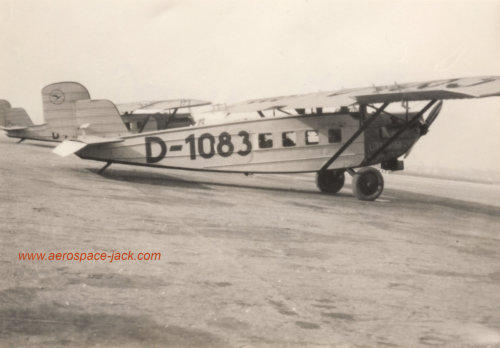
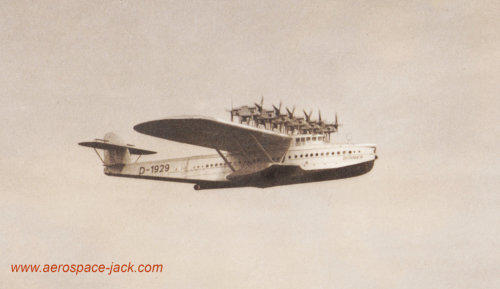

Four years later, the Dornier Do X follows the beaches at the Baltic coast.
(click to enlarge - the file may not be modified - commercial use is prohibited.)
An enlargement of the right postcard with the Dornier Do X.
(click to enlarge - the file may not be modified - commercial use is prohibited.)
Post 049
From the desk of Wernher von Braun
When I studied Aerospace Technology in Berlin from the 1970s, I had
several conversations in the office of the institute's director Heinz
Hermann Koelle (1925 - 2011). The man was a legend and was
revered by us students. He had been on the launch team of the first
U.S. satellite Explorer, had been decisive in the development of the
Saturn rocket, and had been director of the Marshall Spaceflight
Center. In 1965, he went to Berlin to succeed the late space pioneer
Eugen Sänger (1905 - 1964).
In Berlin, it was common practice for the library to give away books
and journals that were no longer needed to students. In his office,
Koelle had a stack of books ready to give away. When our
conversation turned to Wernher von Braun, he retrieved a thick pack
of papers from there. This "Orbital Flight Handbook" he had received
from Wernher von Braun. When he was in his office for a meeting, it
was on his desk. In his position, he no longer needs to make any of
the complicated calculations himself, von Braun said with a smile. He
simply passes the order on and gets the result delivered a few days
later. So he no longer needs the manual. Koelle then took it. Would I
be interested in it? Of course! So I lugged the thick stack of paper
around with me this day.

Posted by Uwe W. Jack
Wernher von Braun and Heinz Hermann
Koelle.
In the background the rocket collection of
designs, Wernher von Braun was
involved, can be seen. As a young man, I
build all this rockets in 1:48 scale. Only
the Saturn V was missing, Because my
parents refused to cut an opening into the
ceiling, like von Braun has in his office,
(click to enlarge)

Wernher von Braun at his desk in the early 1960s.
(click to enlarge)
The foreword
(click to enlarge - the file may not be
modified - commercial use is prohibited.)

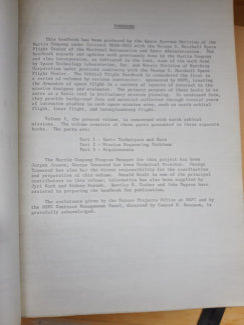

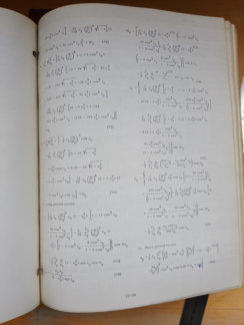


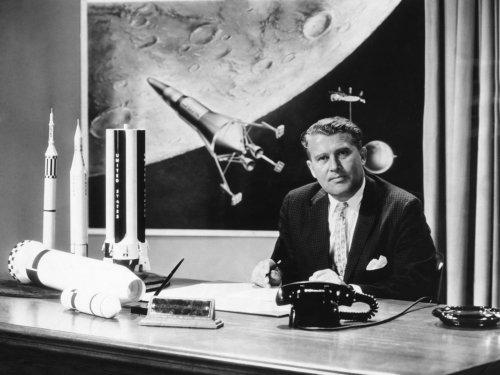



Leafing through the manual, I was horrified. Hundreds of pages of
complex mathematics, about 1200 to 1300 sheets in all! My
admiration for people who understand orbital mechanics! To keep the
pages from getting jumbled, and since I couldn't find a ring binder in
US format, I bound the three volumes into paperbacks.
The legacy of Heinz Hermann Koelle is now in the German Museum
of Technology in Berlin. I think his "Orbital Flight Handbook" from the
desk of Wernher von Braun, should belong to it. I will give it to the
museum.
The cover of NASA’s Orbital Flight
Handbook from 1963.
(click to enlarge - the file may not be
modified - commercial use is prohibited.)
The table of the (then known) planetary
dimensions makes clear, what we have
learned since then.
(click to enlarge - the file may not be modified
- commercial use is prohibited.)
Mathematics and more mathematics…
(click to enlarge - the file may not be
modified - commercial use is prohibited.)
All kind of orbital trajectories are calculated.
Please have in mind, that there had been
virtually no computers at the time!
(click to enlarge - the file may not be
modified - commercial use is prohibited.)
Escape from earth the long way.
(click to enlarge - the file may not be
modified - commercial use is prohibited.)
Post 050
Forced Labor in Nazi-Germany
People from neighboring countries have always worked in Germany.
This was also the case before 1939. But with the beginning of the
Second World War, the situation changed. Many wanted to stay in
their home countries during these times and in Germany many
workers had to join the military. As a result, there was a shortage of
labor. When advertising abroad showed little success, the Nazis
began to bring workers to Germany against their will. Later, prisoner-
of-war soldiers and inmates of concentration camps and prisons
were also forced to work. The conditions under which these people
had to live and work were often very bad. Different nationalities were
treated differently. The Russian prisoners of war, had the hardest
live.
At a flea market in Berlin I found a silent witness of this time. A sign,
which probably hung in a workshop. In German and Czech language
it applies for people from both countries: "Theft of tools and materials
is sabotage and is punishable by death”.

Posted by Uwe W. Jack

In the midst of beautiful old things lies a sign of a hard and deadly time.
(click to enlarge - the file may not be modified - commercial use is prohibited.)
Concentration Camp prisoners working with BMW aeroengine
company. The person in the white work coat must have been
an engineer. No other people were allowed to wear a white
work coat
(click to enlarge - the file may not be modified - commercial use
is prohibited.)




Working labor in Germany December 31. 1943. German = black, foreign = grey.
No prisoners of war included. (click to enlarge - the file may not be modified -
commercial use is prohibited.)
1 - Agriculture
2 - hunters, fishermen
3 - Mining
4 - Stone- ceramic workers
5 - Metal professions
6 - Musical instruments, toys
7 - Chemistry
8 - Rubber
9 - Textile
10 - Paper
11 - Leather
12 - Wood
13 - Food
14 - Clothing
15 - Hairdressing, personal care
16 - Building trades
17 - Graphic arts
18 - Cleaning work
19 - Theater - film workers
20 - Restaurants
21 - Transportation
22 - Domestic help
23 - unskilled workers
24 - Machinists, stokers
25 - Office
26 - Technicians
27 - other professions
28 - Workers without profession
Prisoners from a jail (Z = Zuchthaus) working at BMW at engines
BMW 801 for Focke Wulf Fw 190 or some Junkers bombers.
(click to enlarge - the file may not be modified - commercial use is
prohibited.)











